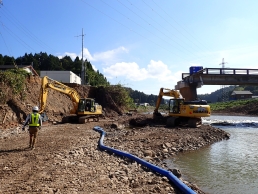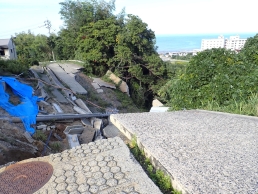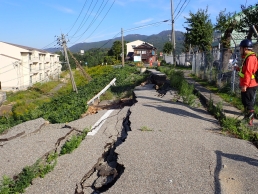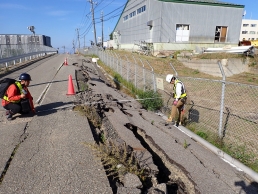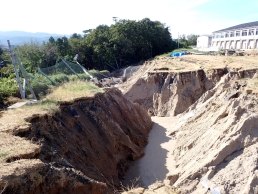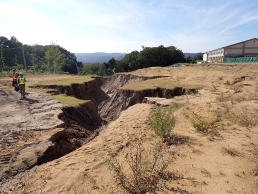2週間前の話になりますが、10月14日に再び地盤工学会の調査団として、能登半島地震の調査に行きました(珠洲、輪島)。不運にも地震被災地には9月21日に非常に強い豪雨が襲ったため、「地震後の豪雨に伴う土構造物の被災」を調査することが目的でした。
能登半島地震後、1月、2月、5月に調査をしましたが、今回同じ場所に行くと、①堤防の沈下や天端クラックの進展、②地震で崩壊した斜面の崩壊範囲の拡大等が見られました。おそらく、余震の影響、降雨の影響、緩慢な過剰間隙水圧の消散等が影響しているのだと思います。地震でダメージを受けた土構造物はその後の雨や余震に対して弱くなっているので速やかな対応が必要です。現地では倒壊家屋の工費解体、仮設住宅の建設が進みつつあり、珠洲市でもコンビニやラーメン屋が開店する等、5月に比べれば復興している様子が感じられましたが、まだまだその途上にあるようです。
Two weeks ago, on 14 October, we went again to Noto Peninsula as a member of earthquake survey team of the JGS (Japanese Geotechnical Society). The mission was to investigate “damage to earth structures caused by heavy rainfall after the earthquake”, as there had been heavy rainfall on 21 September in the area.
After the Noto Peninsula earthquake, we conducted field surveys in January, February and May, and when we visited the same sights this time, we found (i) further deformation of embankments/river dike, and (ii) expansion of collapsed area of slopes that collapsed due to the earthquake. It is probably due to the effects of aftershocks, rainfall and the slow dissipation of excess pore water pressure in the ground.
Earth structures damaged by the earthquake are vulnerable to subsequent heavy rain and aftershocks, so immediate restoration is needed. The demolition of collapsed houses and the construction of temporary housing are progressing, and in Suzu City, convenience stores and ramen shops have opened, showing that the area is recovering compared to May, but it still seems to be on the way.
